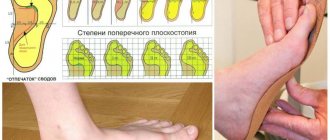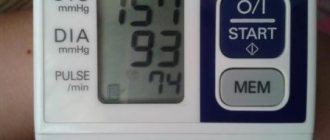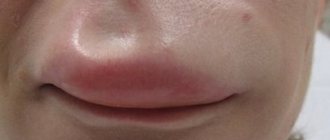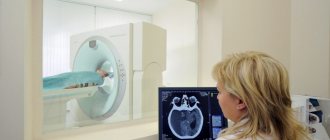Author: Inna Makarenko, general practitioner (USA, Massachusetts, Boston)
The body of humans and mammals is permeated with thousands of small, medium and large vessels that contain a valuable liquid that performs a huge number of functions - blood. Throughout life, a person experiences the influence of a considerable number of harmful factors, among them the most common are traumatic effects such as mechanical damage to tissue. As a result, bleeding occurs.
What it is? The medical science of “pathological physiology” gives the following definition to this condition: “this is the release of blood from a damaged vessel.” At the same time, it pours out or into the body cavity (abdominal, thoracic or pelvic) or organ. If it remains in the tissue, saturating it, it is called hemorrhage; if it freely accumulates in it, it is called a hematoma. A condition in which blood vessels are damaged, most often occurring suddenly, and if there is a strong rapid leakage of vital fluid, a person can die. That is why first aid for bleeding often saves his life, and it would be nice for everyone to know the basics. After all, such situations do not always occur when there are medical workers nearby or even just specially trained people.
What is arterial bleeding?
Arterial bleeding is a type of bleeding that comes from damaged arteries. These vessels carry oxygenated blood to all corners of our body, so failure of large vessels of this type can be fatal.
It is necessary to act immediately in case of such blood loss, because high pressure in the arteries causes blood to flow out at high speed. Often the count goes by minutes and even seconds.
Differences between arterial and venous bleeding
Main causes of bleeding
What can cause bleeding? It is appropriate to note here that two fundamentally different types are also distinguished, based on the factor of whether the normal vessel is damaged or the pathological condition arose against the background of destruction of the altered vascular wall. In the first case, bleeding is called mechanical, in the second - pathological.
The following main causes of bleeding can be identified:
- Traumatic injuries. They can be thermal (from exposure to critical temperatures), mechanical (from a bone fracture, wound, bruise). The latter occur in various extreme situations: road accidents, train and plane crashes, falls from a height, fights involving piercing objects, gunshot wounds. There are also industrial and domestic injuries.
- Vascular diseases, including tumors (purulent tissue lesions involving blood vessels, atherosclerosis, hemangiosarcoma).
- Diseases of the blood coagulation system and liver (hemophilia, von Willebrand disease, fibrinogen deficiency, hypovitaminosis K, hepatitis, cirrhosis).
- General diseases. For example, diabetes mellitus, infections (viral, sepsis), lack of vitamins, and poisoning cause damage to the vascular walls throughout the body, as a result of which plasma and blood cells leak through them and bleeding occurs.
- Diseases affecting various organs. Bleeding from the lungs can cause tuberculosis, cancer; from the rectum - tumors, hemorrhoids, fissures; from the digestive tract - stomach and intestinal ulcers, polyps, diverticula, tumors; from the uterus - endometriosis, polyps, inflammation, neoplasms.
What is characteristic of arterial bleeding?
The main sign of arterial bleeding is a rapid flow of scarlet blood from the wound. When bleeding from veins, the blood is darker in color and flows slowly, since the pressure in these vessels is much lower.
Arterial bleeding has characteristic signs by which it can be easily recognized:
- The leaking blood is bright scarlet in color and flows at a considerable speed,
- The blood is quite liquid, in contrast to the thick venous,
- The blood stream “pulsates” in rhythm with the heartbeat,
- The pulse in the areas of the damaged artery located below the wound is weakly felt or absent,
- The victim’s well-being worsens before our eyes: the person feels dizzy, loses strength, may lose consciousness,
- The skin quickly becomes pale and acquires a bluish tint.
If the carotid artery is injured, the victim's life is in great danger. This is one of the main vessels that supplies blood to the brain. Without first aid, a person will die in a couple of minutes, so you should definitely know how to stop bleeding.
Internal bleeding.
Internal bleeding is bleeding that is invisible to the eye. Their danger is that blood loss increases over time, but we do not immediately detect this.
Blood can unnoticed flow into the abdominal or chest cavity during injury, and also soak into muscles when large bones are broken. For example, with a fracture of the femur, blood loss can be 1-1.5 liters.
We don’t see bleeding, but we can guess its presence by the following signs:
- There is an injury that may cause bleeding (fall from a height, hit with a stone in the chest/stomach, fracture of the ribs, large bones of the limbs, etc.)
- The person’s condition worsens: weakness, pale skin increases, and the pulse quickens.
- The participant complains of dry mouth, thirst, and “body tremors.”
- The participant becomes drowsy and loses consciousness.
What can cause bleeding?
In the clinic, there are two types of bleeding: from mechanical or pathological damage. The first indicates trauma to the vessel wall due to fractures of nearby bones or injury from any object.
Pathological ones occur when the arterial wall is destroyed due to its structural changes. This phenomenon may be the result of a tumor process in the vessels, or occur due to vasculitis and other systemic diseases.
Common causes of bleeding from the arteries include:
- Injuries resulting from road accidents.
- When an artery is damaged, the cause of bleeding does not play a major role. In any case, it is necessary to provide first aid as quickly as possible and contact qualified specialists.
- Different types of hemophilia.
- Liver cirrhosis, hepatitis.
- Diabetes.
- Vascular damage caused by bacterial toxins and viral infections.
When a large artery is damaged, centralization of blood circulation occurs - a condition in which blood moves away from the extremities, concentrating in the area of vital organs - lungs, brain, heart. This is a physiological phenomenon aimed at emergency life support. It manifests itself as pallor and cyanosis of the extremities, which cease to be supplied with blood as usual.
Why is arterial bleeding most dangerous?
Arterial blood is the main supplier of oxygen to all organs.
Serious blood supply threatens ischemia, that is, oxygen starvation, of certain parts of the body. Organs like the intestines can go without air for tens of minutes, but irreversible changes occur in the brain and heart after just 6 minutes of fasting.
There is also such a thing as collapse - a condition in which hemorrhagic shock occurs due to a sharp drop in blood pressure and blood flow volume. It can lead to cardiac arrest.
What types of bleeding are there and why do they occur?
There are many classifications of this pathological condition and specialists teach them all. However, we are interested in dividing bleeding into types, first of all, from a practical point of view. The following classification is important for successful first aid. It shows the types of bleeding depending on the nature of the damaged vessel.
Arterial bleeding
It comes from the arteries containing oxygenated blood flowing from the lungs to all organs and tissues. This is a serious problem, since these vessels are usually located deep in the tissue, close to the bones, and situations where they are injured are the result of very strong impacts. Sometimes this type of bleeding stops on its own, since the arteries have a pronounced muscular layer. When such a vessel is injured, the latter goes into spasm.
Venous bleeding
Its source is venous vessels. Through them, blood containing metabolic products and carbon dioxide flows from cells and tissues to the heart and further to the lungs. Veins are located more superficially than arteries, so they are damaged more often. These vessels do not contract during injury, but they can stick together because their walls are thinner and their diameter is larger than that of arteries.
Capillary bleeding
Blood bleeds from small vessels, most often the skin and mucous membranes; usually such bleeding is insignificant. Although it can be frighteningly abundant with a wide wound, since the number of capillaries in the tissues of the body is very large.
Parenchymal bleeding
Separately, so-called parenchymal bleeding is also distinguished. The organs of the body are hollow, essentially “bags” with multi-layered walls, and parenchymal, which consist of tissue. The latter include the liver, spleen, kidneys, lungs, and pancreas. Typically, this type of bleeding can only be seen by a surgeon during an operation, since all parenchymal organs are “hidden” deep in the body. It is impossible to determine such bleeding based on the type of damaged vessel, because the organ tissue contains all their varieties and all of them are injured at once. This is mixed bleeding. The latter is also observed with extensive wounds of the extremities, since the veins and arteries lie nearby.
***
Depending on whether the blood remains in the cavity of the body or organ or pours out of the body, bleeding is distinguished:
- Internal. Blood does not come out, staying inside: in the abdominal, thoracic, pelvic cavities, joints, and ventricles of the brain. A dangerous type of blood loss that is difficult to diagnose and treat because there are no outward signs of bleeding. There are only general manifestations of its loss and symptoms of significant dysfunction of the organ(s).
- External bleeding. Blood is poured into the external environment, most often the causes of this condition are injuries and various ailments that affect individual organs and systems. These bleedings can be pulmonary, uterine, from the skin and mucous membranes, gastric and intestinal, from the urinary system. In this case, visible outpourings of blood are called obvious, and those that occur in a hollow organ communicating with the external environment are called hidden. The latter may not be detected immediately after bleeding begins, because it takes time for blood to come out, for example, from a long digestive tube.
Typically, bleeding with clots is external, hidden or internal, when the blood is retained inside the organ and partially coagulates.
- Spicy. In this case, a large amount of blood is lost in a short period of time, usually occurring suddenly as a result of injury. As a result, a person develops a state of acute anemia (anemia).
- Chronic. Long-term loss of small volumes of this biological fluid is usually caused by chronic diseases of organs with ulceration of the vessels of their walls. Causes a state of chronic anemia.
Video: bleeding in the “School of Doctor Komarovsky”
How can you stop bleeding?
Several techniques are used to stop bleeding. It is worth choosing one of them depending on the location of the damaged vessel, its size, and the intensity of the hemorrhage.
These are the techniques:
- Finger compression of the vessel,
- Application of a tourniquet,
- Wound tamponade.
Pressure points of arteries
The first and last methods of stopping are suitable if the carotid, maxillary or temporal arteries are damaged, that is, those vessels on which it is impossible to apply a tourniquet. Arterial bleeding from wounds of the extremities can most effectively be stopped using a tourniquet.
Can the body cope with bleeding?
Nature has provided for the possibility that fragile and delicate living tissues of the body will be injured over a long life. This means that a mechanism is needed to resist the flow of blood from damaged vessels. And people have it. Blood plasma, that is, the liquid part that does not contain cells, contains biologically active substances - special proteins. Together they make up the blood coagulation system. It is assisted by special blood cells called platelets. The result of complex multi-stage blood clotting processes is the formation of a thrombus - a small clot that clogs the affected vessel.
In laboratory practice, there are special indicators that show the state of the blood coagulation system:
- Duration of bleeding. An indicator of the duration of blood effusion from a small standard injury caused by a special stylet on a finger or earlobe.
- Blood clotting time - shows how long it takes the blood to clot and form a clot. Conducted in test tubes.
The normal bleeding duration is three minutes, blood clotting time is 2-5 minutes (according to Sukharev), 8-12 minutes (according to Lee-White).
Often, trauma or damage to a vessel by a pathological process is too extensive and natural mechanisms to stop bleeding cannot cope, or a person simply does not have time to wait due to the threat to life. Without being a specialist, it is difficult to assess the condition of the victim, and treatment tactics will vary depending on the cause.
Therefore, a patient who has severe bleeding from a vein or artery must be urgently transported to a medical facility. Before this, he must be provided with emergency assistance. To do this, you need to stop the bleeding. Usually this is a temporary cessation of blood flow from the vessel.
How to provide first aid correctly?
Timely provision of first aid for profuse arterial hypertension often determines whether the victim will remain alive. To quickly provide assistance, it is worth knowing what to do in this situation. First of all, call an ambulance, and then immediately begin following the recommended course of action.
Stop bleeding point by point
- Decide on a method to stop the bleeding. As mentioned above, depending on the location of the injury, you can simply pinch the vessel with your fingers, apply a tourniquet, or tamponade the wound.
- First aid will help the victim wait for the ambulance to arrive. After which the bleeding will be completely stopped by ligating the vessel or suturing the wound.
- First, try to squeeze the artery with your fingers. The vessel should be pressed not against soft tissues, but against the bone, to ensure effective stopping of bleeding.
- If localization allows, apply a tourniquet slightly higher from the site of vessel damage.
- If it is not possible to apply a tourniquet, tamponade the wound.
Symptoms of bleeding
The clinical picture of bleeding depends on how great the blood loss is, on the characteristics of the injuries, the nature of the injuries and their size, the type of damaged blood vessel, its caliber, as well as on where the blood is poured (into the internal tissues, into the lumen of the internal organ, into body cavity or through the wound surface and mucous membranes to the outside).
Signs of bleeding can be local and general.
The general ones are the same for different types of bleeding and manifest themselves with significant blood loss in the form of symptoms characteristic of acute anemia. These include:
- weakness;
- dizziness;
- tinnitus;
- noise in the head;
- pain in the heart area;
- nausea;
- the appearance of spots before the eyes;
- sticky cold sweat;
- rapid breathing;
- frequent small pulse;
- decreased arterial and central venous pressure;
- oliguria (decreased amount of urine excreted) or anuria (lack of urine flow into the bladder);
- anxiety;
- feeling of lack of air;
- loss of consciousness.
Local symptoms of bleeding may vary depending on what type of vessels are damaged and where the blood was leaked.
If the integrity of the main blood vessels is violated, local signs are:
- wound in the projection of the vessel and bleeding from it;
- reduced or absent arterial pulsation in an area distant from the wound site;
- formation of a pulsating hematoma in the wound area;
- pallor of the skin and coldness of the injured limb (distal to the wound site);
- paresis, paresthesia, ischemic contracture;
- ischemic gangrene of the damaged limb;
- compression of muscles, nerves and adjacent vessels by the hematoma and, as a consequence, disruption of tissue nutrition and necrosis;
- formation of arterial or arteriovenous false traumatic aneurysm (expansion of the wall of a blood vessel in a limited area);
- circulatory disorders in the distal parts of the injured limb;
- "cat purring" symptom.
In medicine, special attention is paid to internal bleeding. They pose a serious danger to the patient’s life, but diagnosing them is much more difficult than external ones. With internal bleeding in the lumens of hollow internal organs, the following local signs may occur:
- copious discharge of scarlet foamy blood and discharge of bloody sputum from the respiratory tract when coughing (with damage to the lungs);
- vomiting blood or the presence of bloody impurities in the vomit, black-brown vomit in the form of “coffee grounds” (gastroduodenal bleeding);
- tarry black stools (with bleeding in the upper intestines) or discharge of scarlet blood from the rectum (with damage to the sigmoid and rectum);
- the presence of blood and red blood cells in the urine (when blood leaks from the kidney or urinary tract);
- bleeding into the nasal cavity.
When bleeding in a body cavity, the symptoms can be varied, they differ depending on where exactly the hemorrhage occurred.
How should a vessel be clamped during arterial bleeding?
To provide assistance with blood loss as quickly as possible, you need to know what actions to perform during digital compression and in what order.
In an extreme situation, try to concentrate and follow this algorithm:
- Find the wound. If it is not visible due to blood, you need to apply pressure with your palm. This way you can determine exactly where the “fountain” is coming from and better cover the wound.
- Remove clothing from the injured area.
- If the bleeding is coming from a vessel on your arm, press it against the nearest bone with your thumb and use your other finger to grasp and squeeze your hand.
- Hold the wound for 10 minutes. This time is most often enough to stop mild to moderate bleeding.
- Do not remove your fingers until the tourniquet is applied.
Finger pressure
It is advisable to disinfect your hands with soap or antiseptic before performing clamping. This way you can avoid infection in the wound. However, in a situation where there is a serious threat to the life of the victim, this advice can be safely ignored.
Places of compression of the main arteries:
| Artery name | How to find | Bone to press |
| Temporal | 2 cm superior and anterior to the opening of the external auditory canal | Temporal |
| Facial | 2 cm anterior to the angle of the mandible | Lower jaw |
| General sleepiness | Superior edge of the thyroid cartilage | Carotid tubercle of the transverse process of the 6th cervical vertebra |
| Subclavian | Behind the collarbone in the middle third | First rib |
| Axillary | Anterior border of hair growth in the armpit | Head of humerus |
| Shoulder | Medial border of the biceps muscle | Inner surface of the shoulder |
| Femoral | Middle of the inguinal fold | Horizontal ramus of the pubis |
| Popliteal | Top of the popliteal fossa | Posterior surface of the tibia |
| Abdominal aorta | Navel area (pressed with fist) | Lumbar spine |
Features of first aid
In order to stop bleeding from an artery, you should know how the vessels are located in the body. If arteries in the legs or arms are damaged, it is recommended to apply a tourniquet. If the carotid artery is damaged, a splint or digital pressure is used. The figure shows the location of arteries in the body.
Help with arterial bleeding involves squeezing the damaged vessel.
Place of application of a tourniquet or splint depending on the location of the wound:
- the carotid artery is compressed in the area of the 7th cervical vertebra in the region of the cleidomastoid muscle;
- if the jaw artery is damaged, the person providing assistance must clamp the area on the lower jaw in the area of the masticatory muscle;
- if blood comes from the temporal artery, the temple area is compressed;
- the femoral artery must be pressed against the pubic bone in the area of the inguinal ligament;
- the popliteal artery is compressed in the middle of the popliteal cavity;
- the shoulder is compressed in the area of the inner surface of the shoulder hand, under the biceps;
- when blood comes from the subclavian artery, a tourniquet should be applied to the tibia along the back of the leg.
You can more accurately see which areas are pinched when specific arteries are damaged in the figure.
Schematic representation of the place where arteries are clamped during bleeding
Important! The effectiveness of first aid and the patient’s life depend on the correct application of a tourniquet, splint or finger pressure.
Actions when applying a tourniquet
A tourniquet is a more reliable way to stop bleeding than clamping an artery. It is applied in cases of moderate and severe hemorrhages 2 cm above the damaged area.
The tourniquet can be medical, that is, pre-made. However, in emergency situations, most often this device can be replaced with improvised means such as a belt, strips of strong fabric, or a tie.
When choosing an item to bandage, make sure it is as wide as possible. Thin ropes are not suitable for making a tourniquet, as they compress the tissue too much, promoting the development of necrosis.
The tourniquet is not applied to the skin. To avoid pinching too much, place a piece of fabric under it or simply fasten it to the patient’s clothing. The criterion for correct application of a tourniquet is the absence of a pulse in the compressed vessel below the point of application.
It is worth remembering that the tourniquet cannot be applied for a long time. In summer, you can fix the vessel for 60 minutes, in winter – 30 minutes. To help emergency physicians, write a note with the exact time to clamp the artery, secure it with a tourniquet, or pin it to your clothing. If paper is not available, write a note on the victim's skin.
After the recommended clamping time has passed, the tourniquet should be removed for 10 minutes. This helps to avoid tissue necrosis as a result of oxygen starvation.
Applying a tourniquet for arterial bleeding
The application of a tourniquet to the carotid artery has a number of features. In order not to crush the vessel on the opposite side, it is necessary to raise the victim’s hand on the side opposite to the location of the wound. You can also use any strong stick, after placing a cotton-gauze roller between it and the skin.
Secure the artery with a tourniquet, also wrapping it around the splint (stick or hand). Bleeding in the neck is very difficult to stop, so try to secure the tourniquet well.
Intestinal bleeding in a child
Blood loss from the lower parts of the digestive system can also occur in children under 3 years of age. This is how congenital pathology of newborns manifests itself. This phenomenon occurs in the presence of the following diseases:
- Volvulus, intestinal obstruction.
- Duplication of the small intestine.
- Ulcerative necrotizing enterocolitis.
Symptoms of the complication manifest themselves in the form of bloating, constant belching, regurgitation, vomiting and stool with mucus, which has a green tint and a watery consistency.
How is wound tamponade performed?
Tamponade and tourniquets can stop serious bleeding, but they are only temporary measures. Only qualified health workers can finally cope with the situation.
How to stop bleeding if it is impossible to apply a tourniquet? In such cases, tamponade is necessary.
To do this, you will need a bandage or cotton wool; if they are unavailable, ordinary paper napkins will do.
Fold cotton wool or napkins in several layers, press them to the wound, wrapping them tightly with a bandage. A tampon of this type is used for hemorrhages from the arteries of the upper and lower extremities.
To make stopping the bleeding more effective, elevate the affected limb.
How to stop arterial and venous bleeding?
Step by step guide for bleeding
- Take measures to protect yourself for people who are helping a bleeding victim. It is necessary to wear rubber gloves and avoid getting blood on the mucous membranes and skin, especially if they are damaged. This is the prevention of various infectious diseases (viral hepatitis, HIV, etc.).
- If the bleeding is massive, be sure to call an ambulance or take the victim to a medical facility yourself, having first temporarily stopped the bleeding.
- Stop bleeding using the methods listed above depending on the type and location of bleeding.
- To prevent the development of acute anemia and carry out the first therapeutic measures when it occurs:
For this you need the following. Place the victim in a horizontal position. In case of massive blood loss or fainting, place the victim in such a way that the head is lower than the body. They raise the upper and lower limbs, thereby increasing the flow to vital organs (brain, lungs, kidneys, etc.). If consciousness is preserved and there is no damage to the abdominal organs, you can give the victim tea, mineral or ordinary water, which will help replenish fluid loss from the body.
Capillary bleeding
A simple bandage on a wound can easily stop bleeding. It is enough just to raise the injured limb above the body and the bleeding decreases. At the same time, blood flow to the wound decreases, pressure in the vessels decreases, which contributes to the rapid formation of a blood clot, closure of the vessel and cessation of bleeding.
Venous bleeding
To stop bleeding you need: a pressure bandage. Place several layers of gauze over the wound, a thick wad of cotton wool and bandage tightly. This leads to the fact that under the bandage in the vessels the blood turns into blood clots, which reliably stop the bleeding. Of particular danger are bleeding from large veins of the neck and chest, which normally have negative pressure. And if they are damaged, air can enter them, which can subsequently cause blockage of vital vessels in the lungs, heart, brain and lead to death. Therefore, in case of bleeding from large venous vessels, a tight, airtight bandage should be applied. And if the bandage is completely saturated with blood, you should not remove it; you should put another clean one on top of it.
Arterial bleeding
If the bleeding is small, it is possible to stop it with a pressure bandage. When bleeding from a large artery, finger pressure on the vessel in the wound is used to immediately stop the bleeding while the tourniquet is being prepared. Stop bleeding by applying a clamp to the bleeding vessel and tightly tamponade the wound with a sterile napkin. The clamp should only be used by a surgeon or an experienced paramedic. Also, to urgently stop bleeding, pressing the artery along its length is used. The arteries are pressed against the underlying bone formations. Stopping bleeding with finger pressure is performed only as a short-term measure. For the person providing assistance, this method requires great physical strength and patience. However, the method helps to gain time for setting up a more reliable method - applying a tourniquet . The artery is usually pressed with a thumb, palm, or fist. The femoral and brachial arteries are most easily pressed. And so, the methods used to temporarily stop arterial bleeding are as follows: 1) finger pressure of the vessel in the wound; 2) pressing the artery throughout; 3) tight tamponade; 4) application of a tourniquet; 5) circular tugging of the limb 6) hemostatic clamp.
Actions in case of large blood loss
The most bloodthirsty artery is the carotid artery. It is vital, and its damage is very often fatal. If you manage to stop bleeding from such a major vessel, it is worth taking measures to prevent hypovolemic shock (hypovolemia is a condition in which the volume of blood flow sharply decreases).
The victim should be provided with access to air. Remove his excess clothing. Lay him on his back, try to put his legs on an elevation so that the blood is concentrated as much as possible in the central part of the body.
If the victim is conscious, give him some water or sweet tea. If you lose consciousness and there are no breathing movements, perform an indirect cardiac massage.
In cases of acute blood loss, try to calm the victim so that he does not make unnecessary movements. Wait for the ambulance to arrive, which you need to call before providing first aid. Tell the dispatcher the address of the incident and immediately begin to stop the bleeding.
Therapy after stopping bleeding in the hospital
In case of blood loss, general signs appear:
- weak pulse;
- cardiopalmus;
- dizziness;
- decreased blood pressure;
- fainting state.
In severe cases, hypovolemic shock develops, caused by a decrease in the amount of blood in the vascular bed and insufficient blood supply to vital organs with oxygen.
Mixed bleeding is one of the most serious and dangerous. The rules for stopping bleeding will depend on the part of the body that was injured.
The assistance algorithm is as follows:
- If a limb is injured, you need to lift it up and try to fix it for a few minutes while the first aid kit is brought.
- If blood is released in large quantities from the damaged artery, then you need to press the vessel with your fingers above the wound.
- In cases where the wound is large, pressure can occur not with the fingers, but with the palm of the hand.
- After 3-5 minutes, the limb is placed on a flat surface, and the fingers or palm are removed from the wound. A gauze bandage or bandage is applied to it, folded in 7-10 layers.
- Before the ambulance arrives, the patient can be given local anesthesia (Analgin, Lidocaine, Ketanov). These drugs should be administered to a conscious person, as they can cause severe allergies or anaphylactic shock.
- After another minute, the bandage is removed from the wound and treated with hydrogen peroxide, brilliant green and iodine. The last two antiseptics are applied only around the wound!
- A clean bandage is applied to the treated wound. It should compress the limb, reducing the flow of blood to the wound.
How to behave correctly when providing first aid if the wound is located on the body and it is impossible to apply a pressure bandage?
In this case, you need to use a roll plaster that will be applied with tension.
Mixed bleeding in many cases is accompanied by a severe fracture. Blood can ooze simultaneously from capillaries, veins and arteries that have been damaged by a broken bone or torn muscle.
According to doctors, such wounds are a consequence of:
- gunshot wound;
- damage to a working tool (axe, icebreaker);
- falling from a height onto sharp objects.
In such cases, you need to immediately call an ambulance and stop the blood, as it may flow or spurt from the wound.
First aid rules recommend the following sequence of actions:
- Cover the wound with the palm of your hand and secure with a compressive bandage.
- Apply a tourniquet if possible.
- Inject anesthetic intramuscularly.
- Before the ambulance arrives, give the patient plenty of warm fluids.
It is strictly prohibited for fractures and bleeding:
- begin to stop the bleeding by applying a tourniquet;
- If a decision has been made to use a tourniquet, it should be secured with the maximum possible force. In cases where fixation is insufficient, arterial blood may escape, while venous blood will be compressed;
- if the victim has an open fracture, then applying a splint is possible only after treating the wound and stopping the bleeding;
- such victims are strictly prohibited from moving.
- Weakness, unmotivated drowsiness;
- Dizziness;
- Thirst;
- Feeling of palpitations and shortness of breath.
- Paleness of the skin and mucous membranes;
- Cold sweat;
- Increased heart rate;
- Dyspnea;
- Urinary disorders up to complete absence of urine;
- Drop in blood pressure;
- Frequent weak pulse;
- Impaired consciousness up to and including loss of consciousness.
Local
The use of blood coagulation improving drugs, blood replacement drugs, whole blood/plasma/platelet suspension is mandatory. Intravenous fluid therapy is also necessary to restore ion balance.
DETAILS: Ventricular paroxysmal tachycardia of pirouette type
Since bleeding is usually not the only problem after serious traumatic incidents, in parallel with the work to stop it, doctors carry out emergency diagnosis and treatment of associated disorders.
The main thing is not to lose your head if something bad happens to someone around you and the person is bleeding. In order to cope with it, you can use materials from your car first aid kit, items from your own bag, items of clothing or household items.
The task and duty of every normal person is to provide first aid to the victim, which consists in temporarily stopping the loss of blood. And then you should immediately take the patient to a medical facility under your own power or urgently call an ambulance.
Common signs of bleeding include dizziness, weakness, shortness of breath, extreme thirst, pale skin and mucous membranes, decreased blood pressure, increased heart rate (tachycardia), lightheadedness, and fainting.
The severity and rate of development of these symptoms is determined by the rate of bleeding. Acute blood loss is more difficult to tolerate than chronic blood loss, since in the latter case the body has time to partially “adapt” to the changes taking place.
Local changes depend on the characteristics of the injury or pathological process and the type of bleeding. With external bleeding, there is a violation of the integrity of the skin. When bleeding from the stomach occurs, melena (tarry black loose stools) and vomiting of altered dark blood occurs.
With esophageal bleeding, bloody vomiting is also possible, but the blood is brighter, red, rather than dark. Bleeding from the intestines is accompanied by melena, but the characteristic dark vomiting is absent.
Hidden bleeding is the most dangerous and most difficult to diagnose; they can only be identified by indirect signs. At the same time, the blood accumulating in the cavities compresses the internal organs, disrupting their functioning, which in some cases can cause the development of dangerous complications and death of the patient.
Hemothorax is accompanied by difficulty breathing, shortness of breath and weakening of percussion sound in the lower parts of the chest (with adhesions in the pleural cavity, dullness in the upper or middle parts is possible).
With hemopericardium, due to compression of the myocardium, cardiac activity is disrupted, and cardiac arrest is possible. Bleeding into the abdominal cavity is manifested by bloating of the abdomen and dullness of percussion sound in its sloping sections. When bleeding into the cranial cavity, neurological disorders occur.
The flow of blood beyond the vascular bed has a pronounced negative effect on the entire body. Due to bleeding, the blood volume decreases. As a result, cardiac activity deteriorates, organs and tissues receive less oxygen.
With prolonged or extensive blood loss, anemia develops. The loss of a significant volume of bcc over a short period of time causes traumatic and hypovolemic shock. Shock lung develops, the volume of renal filtration decreases, and oliguria or anuria occurs. Foci of necrosis form in the liver, and parenchymal jaundice is possible.
All fractures are accompanied by bleeding from damaged bone fragments. With open fractures, blood flows outward and into the surrounding tissues, with closed extra-articular fractures - only into the surrounding tissues, with closed intra-articular ones - into the joint cavity.
The amount of blood loss depends on the location and type of fracture. When a finger is broken, only a few milliliters of blood are lost, when a tibia is broken - ml, and when a pelvis is fractured - from 800 ml to 3 liters. If a vessel is damaged by a sharp bone fragment, massive blood loss is also possible in cases where the integrity of a relatively small bone (for example, the humerus) is damaged.
First aid consists of anesthesia and immobilization with a splint. For open fractures, apply a sterile bandage to the wound. The patient is taken to the emergency room or trauma department. To clarify the diagnosis, radiography of the damaged segment is prescribed.
For open fractures, PSO is performed; otherwise, treatment tactics depend on the type and location of the injury. For intra-articular fractures accompanied by hemarthrosis, a joint puncture is performed.
Methods for stopping bleeding are, in turn, divided into mechanical, chemical and thermal. In addition, a distinction is made between permanent and temporary stoppage of bleeding. At the prehospital stage, essentially only a temporary stop of bleeding is possible, which presupposes the provision of qualified medical care in the future.
Chemical methods at the prehospital stage can only stop capillary bleeding. The point of the method is to use substances that enhance blood clotting - for example, silver, lead.
Straight razors are a thing of the past, and lapis shaving pencil is becoming increasingly rare in pharmacies - it contains silver salts, and it does a good job of stopping bleeding from small cuts. For bleeding abrasions and superficial wounds, lead lotion is used.
Hydrogen peroxide also has hemostatic properties. It is used to moisten tampons to stop nosebleeds or to tamponade a wound; it is used to stop capillary bleeding.
Collagen hemostatic sponge is also used from pharmaceutical products; it quickly and effectively stops minor bleeding.
Based on my experience, I would also classify such a “remedy” as newsprint as a chemical means of stopping bleeding. It has been tested many times - it stops bleeding much better than any other.
The thermal method is used mainly during surgery - this is electrothermocoagulation, cauterization of small vessels during the operation. In out-of-hospital conditions, in everyday life, we resort to this method when we apply snow to minor injuries or lower the wounded hand into very cold water.
Local
Severity
Doctors distinguish a special classification of bleeding according to the volume of blood lost.
Severity:
- mild: blood loss volume is 0.5 l;
- average: blood loss ranges from 0.5 to 1 liter of blood;
- severe: in this case we are talking about blood loss from 1 to 1.5 liters of blood;
- massive: blood loss 1.5-2 l;
- fatal: loss of more than 2.5 liters of blood.
These indicators are statistical averages. For example, for those who have a low weight category, the loss of even 1.5 liters of blood can be critical.
The rate of blood loss also affects the chances of survival. For example, if a victim loses 2.5 liters of blood in a few minutes or less, then the chances of a positive prognosis are much less than if the same amount of blood was lost within 24 hours.
Video: first aid for bleeding from an artery
Timely and correct first aid is at least half the success. In the event of an emergency, it is very important not to get confused and remember these basic bleeding control skills.
- Author: Lyudmila Solovyova
A future doctor, I work at night in intensive care and emergency departments. I am interested in cars, cooking, fitness. Rate this article:
- 5
- 4
- 3
- 2
- 1
(7 votes, average: 3.1 out of 5)
Share with your friends!
Why is there bleeding from the stomach?
Bleeding in the intestines, stomach or other digestive organs can develop for the following reasons:
- mechanical damage to the stomach due to foreign body entry;
- abdominal injuries;
- burn of the gastrointestinal mucosa;
- inflammation of the mucous membrane and reflux disease of the esophagus;
- erosive gastritis;
- peptic ulcer of the stomach and duodenum;
- nonspecific ulcerative and bacterial inflammation of the large intestine;
- Crohn's disease;
- endocrine and enzymatic disorders (dysfunction of the parathyroid glands, gastrinoma);
- long-term use of NSAIDs (especially salicylic acid compounds), glucocorticoids, Butadione and other drugs, violations of the rules for using medications;
- complications of operations on the gastrointestinal tract;
- damage to the mucous membrane at the junction of the esophagus and stomach with frequent and intense vomiting (Mallory-Weiss syndrome);
- benign and malignant neoplasia of the digestive tract;
- protrusion of the walls of the gastrointestinal tract (diverticulosis);
- tuberculosis and other chronic inflammatory bowel diseases;
- intestinal infections of bacterial and parasitic origin (dysentery, helminthiasis, etc.);
- volvulus;
- damage to hemorrhoids and intestinal polyps during the passage of feces;
- anal fissure;
- aortointestinal fistula;
- Hirschsprung's disease and other pathologies leading to acute fecal obstruction;
- thrombosis of the portal and hepatic veins;
- compression of the portal vein or large vessels associated with it by neoplasms or large scars;
- severe liver pathologies (cirrhotic lesions, chronic hepatitis);
- varicose veins of the esophageal and gastric veins;
- atherosclerosis of gastrointestinal vessels;
- diseases of autoimmune and inflammatory origin that affect blood vessels (systemic lupus erythematosus, scleroderma, hemorrhagic vasculitis, periarteritis nodosa, etc.);
- congenital vascular anomalies (Rendu-Osler-Weber disease);
- atherosclerosis and aneurysms of the arteries of the digestive tract;
- blockage of blood vessels in the intestinal mesentery;
- congenital (hemophilia) and acquired disorders of the blood coagulation system (acute deficiency of vitamins C and K, hypoprothrombinemia, etc.);
- hemorrhagic diathesis (thrombocytopenic purpura, radiation thrombocytopenia, chronic and acute leukemia);
- DIC syndrome;
- aplastic anemia and other pathologies of the hematopoietic system;
- cardiovascular diseases (inflammation of the valve system of the heart and cardiac sac, insufficiency of cardiac function, arterial hypertension, etc.).
Uterine bleeding
Various types of bleeding and first aid for disorders in the reproductive system of the female body require qualified medical care. The uterus is abundantly supplied with blood vessels, and stopping bleeding is not so easy. This requires the administration of medications and often surgical interventions.
Uterine bleeding is possible due to inflammatory and degenerative processes in the uterus, hormonal disorders, and pregnancy.
First aid measures:
- Take a lying position, raise your legs, placing a pillow under them.
- Place an ice pack or a bottle of cold water on your lower abdomen through a cloth. Keep the ice for 10–15 minutes, then take a break for 5 minutes. Keep it cold for about 1-2 hours in total.
- Drinking plenty of fluids is recommended to replenish blood loss.
In camping conditions, first aid for bleeding is very important. Emergency medicine involves providing competent assistance in conditions where it is impossible to quickly see a doctor. When planning hiking trips, practicing various sports, hunting, fishing, you should have at your disposal a minimum set of medical supplies - a first aid kit. To stop bleeding, a tourniquet, bandage, and disinfectant are needed. A three percent solution of hydrogen peroxide will not only disinfect the wound, but will also help stop bleeding. To compress the vessels of the extremities, you can use available means: clean cotton cloth, handkerchiefs, scarf, belt, clothing. Instead of a tourniquet, you can apply a twist using a strip of fabric and a stick.
In any case, if bleeding occurs, you should determine its type and degree of danger, if necessary, squeeze the vessel with your finger and prepare means to stop the bleeding. In case of serious injuries, take the victim to the first aid station and then to the hospital. Counting on qualified medical care, you must have a sufficient level of knowledge to help yourself and your loved ones if necessary. Indeed, in some cases, the ambulance may arrive only after a few hours, and sometimes you have to deliver the victim to the nearest town yourself.
Diagnostics
Blood in the stool and during vomiting helps in making a diagnosis. The diagnostic program includes such examination methods as:
- General, biochemical blood test.
- Urine examination.
- Coagulogram.
- Fibrogastroduodenoscopy.
- Sigmoidoscopy.
- Fecal occult blood test.
- Ultrasound examination of the abdominal cavity.
- Mesentericography, scintigraphy of mesenteric vessels.
- Radiography.
The choice of tactics depends on the cause of bleeding. Treatment is not carried out at home. A specialist knows how to stop intestinal bleeding and provide adequate therapy.
Hemostatic measures are carried out using instrumental methods. They include:
- Clipping.
- Ligation.
- Surgery.
Therapeutic measures are carried out using drugs such as:
- Aminocaproic acid.
- Hemostatic drugs Fibrinogen, Etamzilat.
- Reopoliglyukin.
- Erythrocyte mass.
- Frozen blood plasma.
- Calcium chloride.
- Vitamin K
- Medicines that restore the volume of intercellular fluid.
The choice of specific minimally invasive treatment depends on the clinical picture:
- Coagulation of damaged vessels using an endoscope is used for frequently recurring hemorrhages.
- Vessel ligation and sclerotherapy are used in cases of injury to varicose veins of the esophagus.
- A colonoscopic electrocoagulator is used for severe, prolonged bleeding from the lower segments of the digestive tube.
For moderate blood loss, the main goal of therapy is to eliminate the underlying cause.
Bleeding from the colon, which occurs against the background of complicated diverticular disease, is eliminated by infusion of Vasopressin. This is done using a catheter, which is not removed for 48 hours, since the complication recurs.
Necrosis of the intestinal wall, local or diffuse peritonitis requires emergency surgical assistance. This involves resection of the affected part of the intestine .
Hemorrhoidal damage to the organ is treated with sclerosis and bandaging.
If signs of bleeding do not stop or intensify, the patient undergoes an autopsy of the abdominal cavity. Surgery allows you to detect the source of bleeding. Subsequent treatment is carried out according to the examination.
Venous
The main type of venous bleeding can be identified by the following signs:
- the secreted blood is dark in color;
- blood flow occurs without stopping and evenly;
- most often the blood flows out in a stream, pulsation is observed extremely rarely and it is associated with the pulse wave of the artery, which passes through or is located next to the damaged vein.
It is particularly dangerous due to the fact that an air embolism may occur, affecting the cerebral and cardiac vessels. Venous bleeding is not as dangerous as arterial bleeding, but it still poses a deadly danger if the necessary first aid is not provided in a timely manner.
Diagnostics
The following diagnostic measures are carried out:
- general and biochemical blood test;
- Analysis of urine;
- stool examination;
- Ultrasound of the abdominal organs.
With a complicated course of the disease, there is a need for urgent surgical intervention. Before the procedure, fluoroscopy is performed. Using this method, you can determine the type of operation. It is worth noting that ulcerative lesions rarely occur in people under 20 years of age.
After diagnosis, further treatment methods include the use of the following methods:
- conservative therapy;
- surgical intervention.
Identification of the source of bleeding involves gastrofibroscopy. Such a study is more accurate; with the help of a special probe, the doctor has the opportunity to examine the condition of the organs from the inside. However, this procedure is carried out after complete gastric lavage or before meals.
When identifying the source of bleeding, symptoms are important. If there is vomiting with blood, then the cause is a pathology of the stomach, but when there is stool mixed with blood, there are obvious disturbances in the functioning of the intestines.
Arterial
Arterial blood loss has the following differences:
- blood has a bright red tint;
- it flows out in the form of a stream;
- characterized by a pulsating character.
This type of bleeding in a fairly short period of time leads to a decrease in the level of hemoglobin in the blood. The victim turns pale and his blood pressure drops sharply. He also complains of dizziness and darkening of his eyes. A feeling of nausea occurs, vomiting often occurs, and the victim loses consciousness.
Arterial bleeding is particularly dangerous because it can result in a lack of oxygen. This in turn leads to pathological changes in the functioning of the brain and cardiovascular system.
How to recognize
This type of bleeding combines signs of damage to arteries, veins and capillaries. There is a release of bright red biological fluid simultaneously with heart contractions. Dark, burgundy, almost black venous blood is also observed. When capillaries are damaged, the flow is small, the color is bright, similar to arterial flow.
In addition, symptoms of blood loss are characteristic: the victim feels weak and suffers from dizziness. Heart rate increases, blood pressure decreases. The color of the skin becomes lighter. Shortness of breath occurs. The man is thirsty. If help was not provided in a timely manner, confusion and impaired consciousness are observed. After some time, the person may faint.
It can also be determined by the location of the damage. Most often, mixed bleeding is observed with lesions of the liver, spleen, lungs or kidneys. It can also appear in cases where the chest or abdominal cavity has been damaged.











